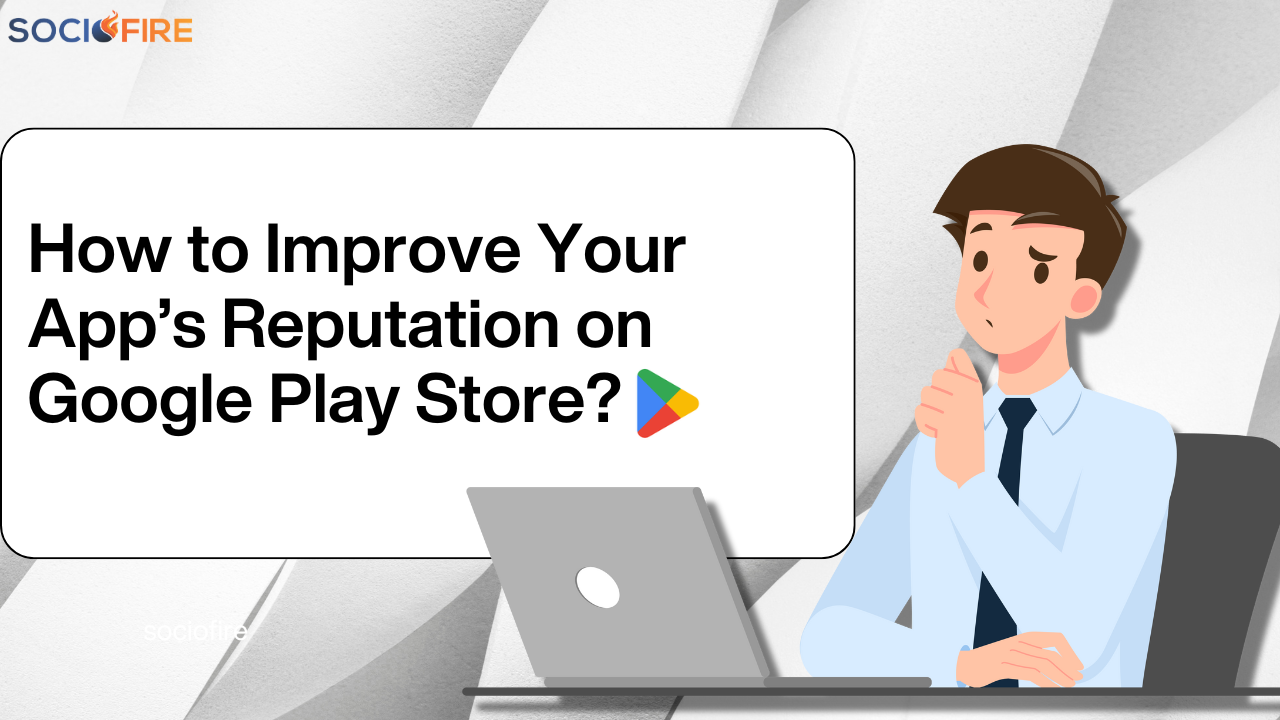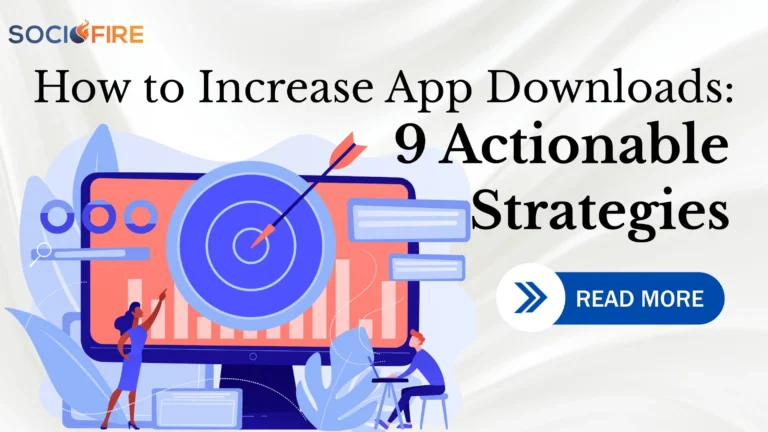How to Improve Your App’s Reputation on Google Play Store?
For any business or organization app, the Google Play rating is very important because it is considered an identity badge. In the market of apps, each one has its competitor, which is why a high rating on Google Play matters a lot. Basically, any app’s success depends more or less on the ratings. If the reviews are good and the app is highly rated, then its visibility increases as well as the organic install number also rises. Whereas, if the rating is low, then the chance of survival is almost zero.
What is the Google Play App Rating?
A Google Play rating shows up as stars ranging from 1 to 5, which users give an app. You’ll see this score on the app’s page, and it’s often the first thing people notice before they hit “Install.” But a rating isn’t just a number. It’s backed by a complicated system that has an impact on: user feedback, how well the app works, how often it gets updated, and how good the support is.
Keep in mind that everyone can see public ratings, while developers can access internal (private) ratings through the Google Play Console. These private metrics help developers to analyze user behavior more and to manage product quality more.
Why Is It Important to Have App Rating on Google Play?
An app’s success and fame highly depend on the rating it has on Google Play. New users are attracted by its high rating, as well as the confidence of the old ones in it. Here are the main reasons why ratings really matter:
- Visibility and Ranking: Google Play’s algorithms consider ratings when positioning an app in search results and recommendations. Apps with high ratings are likely to feature in the top charts, thereby getting high visibility among potential users.
- User Trust: Potential users download apps with four-star-plus ratings because of their perception of them being reliable and of good quality. Low ratings, however, tend to deter potential users from installing the app, thereby reducing installations. As they say, we are all social beings; sometimes, a large number of ratings can fare better than an expensive ad campaign.
- Install Conversion: Conversion rates will grow with positive ratings, whereas low ratings will diminish conversions, regardless of how good the app is.
- Feedback and Product Improvement: The reviews and ratings give interesting clues about the strengths and weaknesses of the app. Analysing this feedback can help a developer implement certain changes, thereby improving the quality of the product and, in turn, its rating.
- Financial Performance: Apps with higher ratings tend to be recommended more frequently by app stores, develop a larger user base, and make higher revenue through in-app purchases or the advertising process.
How To Increase App Rating 2025 in Google Play?
In Google Play, it is very crucial that your app has good ratings and reviews so that more people download it. Below are the ways through which you can increase the app ratings:
- Take User feedback: Reviews aren’t words – they’re signals. Meeting a 1-star review with a polite apology and an offer to look into the matter cements trust. Users may modify their 1-star review to a 4-star if they are heard.
- Continuity and Performance: The performance of the app must be good and it should never lag because this can decrease the credibility of people. The customer will give a high rating if the app is running fast and stably.
- Regular Updates: Updates demonstrate you are working on the product. Even small bug fixes are indicators of user sentiment. The only notice is that you must put in the update notes what was changed.
How to Improve App Rating on Google Play?
There are several ways to improve the app rating on Google Play, such as:
- If the users have to take time to search for the option to leave a review. Most of them probably won’t. Use Google’s In-App Review API to ask for ratings while in the app. Quick, easy, and highly likely to get stars!
- Timing is crucial. Never ask a user to review your app right after a crash or bug. Instead, ask when the user is happy (e.g., after finishing a level, after receiving a reward, or after completing a purchase – happy emotions equal better ratings).
- An application that lags, crashes or is slow will not be five stars, even if the users love it. Optimize performance, make the user interface as simple as possible while keeping relevant permissions to an absolute minimum and have no complex sign-ups.
- Always reply to reviews. It is important to be engaged with your users, especially regarding the negative reviews. A simple, polite response that is also helpful will typically change a 1-star review into a 4-star or 5-star.
If nothing is working, then buy Google Play Store reviews from a trustworthy service provider like Sociofire.
How does the rating system in Google Play work?
Google Play utilizes a weighted average, which means that more recent ratings have a stronger impact than older ratings. This protects the accuracy and fairness of the rating and its representation of the app referred to, even if the app’s earlier version received poor ratings.
- It is not solely about the total number of ratings over time,
- How do rating differences break along country lines?
- How users rated the product differently on their different devices,
- How does the most recent version modify previous structural dynamics in rating?
Furthermore, rating is not presented instantaneously, since first a sufficient number of ratings need to be taken. This is partly in place to prevent artificial ratings inflation.
What influences an app’s rating on Google Play
- Customer Feedback: Reviews aren’t simply text – they are signals. Responding to critical feedback with a courtesy apology and a promise to investigate builds trust. When users feel their feedback was acknowledged, they may be willing to change their 1-star review to a 4-star.
- Performance stability: An application should never lag, crash, or freeze, even if it is the best idea in the world. It doesn’t matter how amazing it is, the negativity will take down an unstable experience.
- User Retention: Your users are likely to leave a positive review when they return to your app, and personalization, rewards, and reminders help to foster engagement.
Common Mistakes That Lower App Ratings
- Not Answering Negative Reviews – Just one unanswered negative review can chase away lots of prospective users.
- A Bad Onboarding Experience – If users are unsure of how to use the app right out of the gate, they will most certainly leave.
- Annoying Ads– Monetization is important, but annoying ads means you are asking for a rash of 1-star reviews.
- No Localization – Users expect both the app description and interface to be in their language.
- Missing Features – Do not advertise features that are not really in the product.
Conclusion
A rating on Google Play is far more than raw stars. It is an indication of the quality of our work, how we crafted the product, and our care for our audience. To get that great and high performance of the app, we have to take a systematic approach: improve UX, be alert to and respond to reviews, optimize the app page, and not shy away from acknowledging mistakes.



